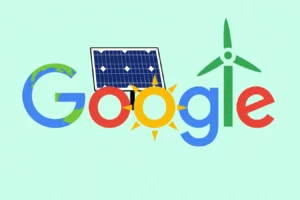Google’s Pixel family has long been a champion of on-device intelligence and user safety. Now, the Pixel Watch 2 is taking a leap forward with the latest Feature Drop, introducing car crash detection alongside a suite of other improvements. This update elevates the Pixel Watch 2 from a stylish accessory to a potentially life-saving companion.
Peace of Mind on Your Wrist: Pixel Watch 2 Detects Car Crashes
The most significant addition in the Feature Drop is undoubtedly car crash detection. Building upon the existing technology present in Pixel phones, the Pixel Watch 2 can now leverage its built-in sensors to detect the impact of a car crash. This includes factors like sudden changes in motion, g-force measurements, and loud noises.
Here’s How It Works:
- Detection: If the Pixel Watch 2 detects a potential car crash, it will vibrate and display an alert on the screen.
- User Response: The user will have a few seconds to acknowledge they’re okay by swiping a button.
- Automatic Emergency Response: If no response is detected, the Pixel Watch 2 will automatically initiate an emergency response, dialing emergency services (911 in the US) and sharing the user’s location with emergency contacts designated through Google’s Emergency Sharing feature.
Car crash detection offers peace of mind, especially for those who drive alone frequently. The ability to automatically call for help in the event of an accident can be crucial in receiving timely medical attention.
Beyond the Crash: Additional Features Bolster the Pixel Watch 2
The Feature Drop offers more than just car crash detection. Here’s a breakdown of other noteworthy additions:
- Nighttime Blood Oxygen Monitoring: Pixel Watch 2 users can now track their blood oxygen levels while they sleep. This data can provide valuable insights into potential sleep apnea or other respiratory issues.
- Improved Fall Detection: Both the Pixel Watch and Pixel Watch 2 receive an upgrade to fall detection, making it more accurate in identifying falls, particularly when cycling.
- Enhanced Google Wallet Integration: Google Wallet functionality on the Pixel Watch is getting a boost. Users can now link their PayPal accounts for even more convenient on-wrist transactions.
These updates solidify the Pixel Watch 2’s position as a comprehensive health and wellness companion, offering valuable insights into your well-being while keeping you connected and prepared for emergencies.

The Power of Combining Hardware and Software
The effectiveness of car crash detection hinges on the Pixel Watch 2’s hardware and software working seamlessly together.
- Advanced Sensors: The Pixel Watch 2 utilizes an accelerometer, gyroscope, and other sensors to detect the specific movements and forces associated with a car crash.
- Machine Learning Algorithms: Google’s machine learning expertise plays a vital role. Algorithms analyze sensor data in real-time, differentiating between a car crash and other activities that might involve sudden movements.
This synergy between hardware and software allows the Pixel Watch 2 to make critical decisions in time-sensitive situations.
Looking Ahead: The Future of Wearable Technology and Safety
The introduction of car crash detection in the Pixel Watch 2 signifies a significant step forward for wearable technology. Here’s what we can expect in the future:
- More Sophisticated Detection Features: Advancements in sensor technology and machine learning algorithms could lead to even more precise detection capabilities, encompassing a wider range of emergencies.
- Integration with Emergency Response Systems: Seamless integration with emergency response systems could further streamline the process of getting help after a detected incident.
- Focus on Preventative Measures: Wearable technology might evolve to not only react to emergencies but also predict potential risks through health data analysis, promoting a more proactive approach to safety.
Beyond the Wrist: A Responsibility for All Tech Companies
While Google’s Pixel Watch 2 takes a commendable step towards user safety, it’s important to acknowledge a wider responsibility within the tech industry. Here’s what other companies can learn from this development:
- Prioritizing User Safety: Safety features like car crash detection shouldn’t be exclusive to premium devices. Tech companies should strive to integrate such features across their product lines.
- Transparency and User Education: Clear communication about the capabilities and limitations of safety features is crucial. Users should understand how these features work and when to rely on traditional emergency response methods.
- Collaboration for a Safer Future: Collaboration between tech companies, healthcare providers, and emergency response agencies can lead to the development of more comprehensive and effective safety solutions for the wearable tech landscape.
The Pixel Watch 2’s Feature Drop is more than just a software update; it’s a testament to Google’s commitment to user safety. As wearable technology continues to evolve, prioritizing user well-being and fostering a collaborative environment within the tech industry will be paramount in creating a future where our gadgets not only enhance our lives but also protect them.















Add Comment